Normally when I talk about learning quickly, I’m using speed as a synonym for efficiency. Use more effective methods and you’ll learn more in less time. All else being equal, that means you’re learning faster.
Today, however, I want to consider a different meaning for speed: how quickly should you try to do things in order to improve performance.
One way to imagine this is to look at something like chess. Chess can be played at different speed levels: you could play tournament-length games, which take hours. You could play blitz, which has only a few minutes, or bullet chess where moves are counted in seconds.
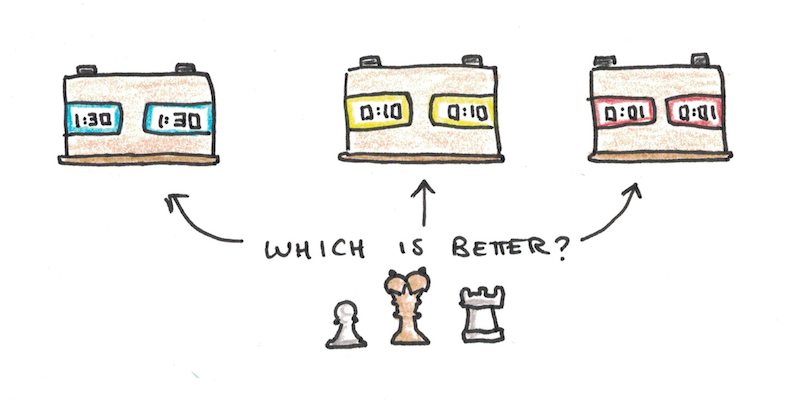
If your goal were to improve at chess, which kind should you make your core practice?
Speed and Transfer
The first thing to consider is that often what we think of as a single skill is actually different skills when viewed from different timeframes.
Consider solving a math problem. You can painstakingly calculate an exact answer. Or you can ballpark it using some guessing. While the two skills are related, they are, strictly speaking, different mental abilities.
The research on transfer shows that when we train skills, they tend to be learned quite narrowly. So tons of time learning to do back-of-the-envelope calculations may not improve your calculating skills as much as you’d expect. This also works in the opposite direction as you may be able to get the “right” answer, but without a quick guess that’s in the ballpark.
I experienced this firsthand when working on my portrait drawing project.
My initial thought was that drawing faces well came from “guessing” the relative positions of facial features, lines and shapes. Thus if I simply did more and more quick practice, my guesses would get increasingly accurate and I’d draw realistic pictures. Speed, then, made sense.
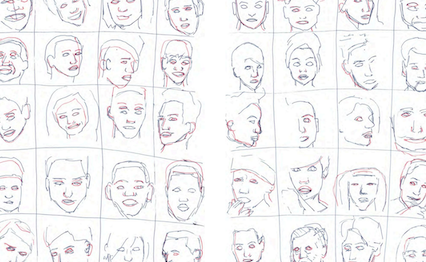
This worked, for a while, but eventually I found that my problem wasn’t accuracy but precision. There was too much variability in my guesses even if I wasn’t systematically making a particular kind of mistake.
The solution ended up being learning a different method for drawing based on triangulation, as taught by Vitruvian Studio. This method, in contrast to my guess-and-sketch approach, was not fast. My first attempts took hours. With practice, I could do it faster, but it was still much slower and more painstaking than sketching.
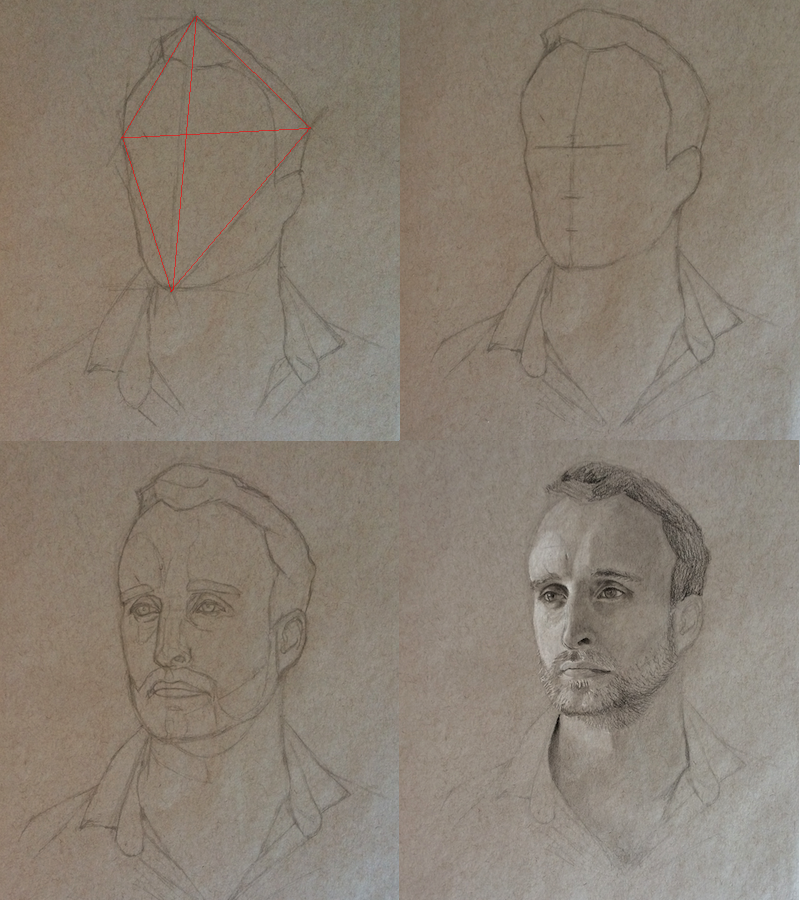
The result was that I got better at drawing portraits, but only weakly better at doing quick sketches. The skills I enhanced mostly worked when I had at least an hour to draw, not sixty seconds. If I wanted to get better at the sixty-second sketches, I’d probably need to master different techniques.
The lesson here is that the timeframe you need to perform a skill within often constrains the methods you can use to master it. The way you solve a problem in ten seconds is often, cognitively speaking, quite different from the way you solve it in an hour.
Are You Failing to Reach an Ideal or You Don’t Know What the Ideal Is?
A lot of learning involves having a mental representation of what the ideal performance ought to be, a method or approach to achieve said performance, and then working towards implementing that method with your mind.
There are therefore two distinct problems you can encounter when you’re trying to learn something. The first is that you have a clear picture of what you’d like to do, and how you’re going to do it, but you’re simply unable to implement the approach you’ve chosen. In these cases, slowing things down is usually better. By slowing down the speed of the overall process you can devote more attention to each aspect of the problem. Only once you’re able to do it correctly does it make sense to try to do it faster. Rushing this only results in making mistakes.
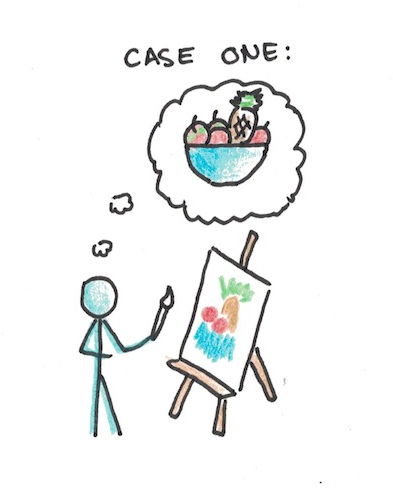
Drawing portraits, it was better that I focus on applying the method the best I possibly could, rather than artificially give myself time constraints, which would have caused me to mess up more things and have a harder time mastering the technique. Similarly, when I want to improve my writing, I usually form a clear idea of what kind of essay I want to write and slow down my process until that form is achievable.
The second type of problem, however, is when you’re not even sure what the ideal should be and need more information to figure this out.
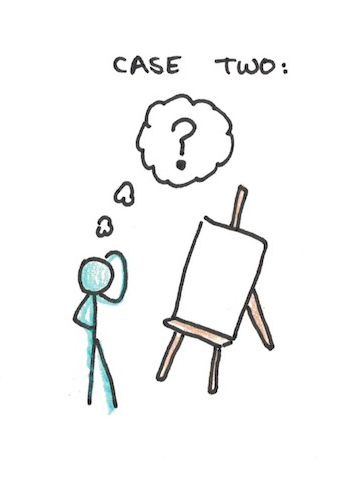
A new writer may need to pen a dozen or more essays to get a sense of the kind of writing they’d like to create. You may need to do a few dozen sketches before figuring out where your artistic deficits lie. Faster means more feedback and solving these problems earlier.
The best example of speed leading to greater quality is often in entrepreneurial domains. The problems being solved here are often related closely to identifying what is the ideal to reach, as opposed to mastering the execution of that ideal. Many businesses fail because the founder picked the wrong problem to solve and wasted too much time trying to solve it.
Ask yourself, “Do I know what I’d like to do, and what approach I should take to do it?” Or, “I’m not sure what’s the right way to approach this?” The former suggests slowing things down, the latter suggests getting faster feedback. These aren’t the only considerations that matter for speed, but it’s a useful heuristic.
A Meta-Heuristic for Handling Trade-Offs
The balance between going faster and doing it right depends on a trade-off. Faster feedback means you get more information allowing you to explore the problem space to figure out what the key challenges are and possible strategies for overcoming them. Thus faster is better. Slowing things down, on the other hand, helps you home in on a strategy you’ve already chosen, allowing you to execute it correctly. Thus slower is also better.
Many (if not most) things you want to learn involve these kinds of trade-offs. You want to space out the things you want to learn to extend your memory, except not so far that you’ll forget. You want to take advantage of direct practice to minimize transfer failures but also do drills to give yourself more space to master components.
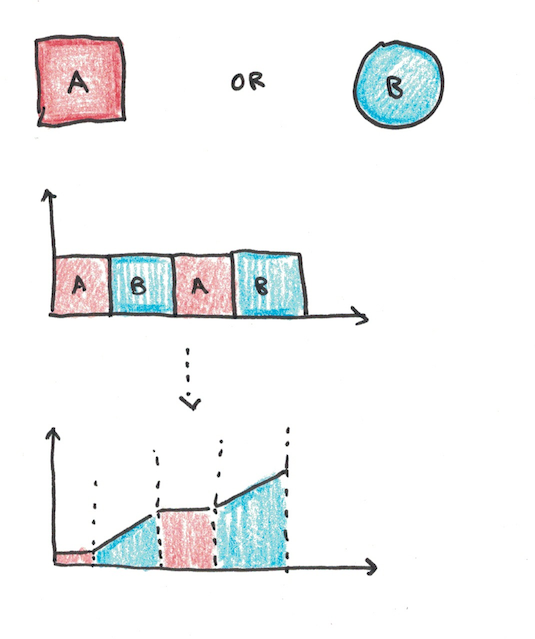
The meta-heuristic I use when dealing with these problems is to do both and feel out which seems to be helping more. So if I were unsure whether my struggles in a new domain were due to inadequate breadth of feedback or inadequate mental bandwidth to do things properly, I might spend ten hours doing both faster and slower practice and see which seems to be bearing more fruit.
If you can adopt the above approach you rarely get “stuck”, but it also requires more self-awareness to monitor your own progress.


 I'm a Wall Street Journal bestselling author, podcast host, computer programmer and an avid reader. Since 2006, I've published weekly essays on this website to help people like you learn and think better. My work has been featured in The New York Times, BBC, TEDx, Pocket, Business Insider and more. I don't promise I have all the answers, just a place to start.
I'm a Wall Street Journal bestselling author, podcast host, computer programmer and an avid reader. Since 2006, I've published weekly essays on this website to help people like you learn and think better. My work has been featured in The New York Times, BBC, TEDx, Pocket, Business Insider and more. I don't promise I have all the answers, just a place to start.